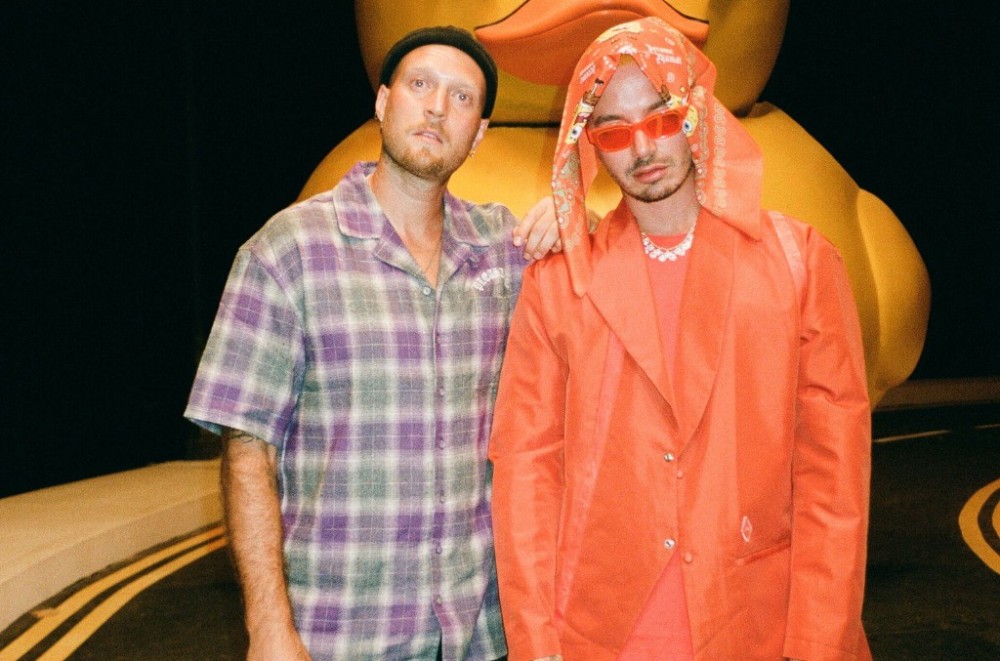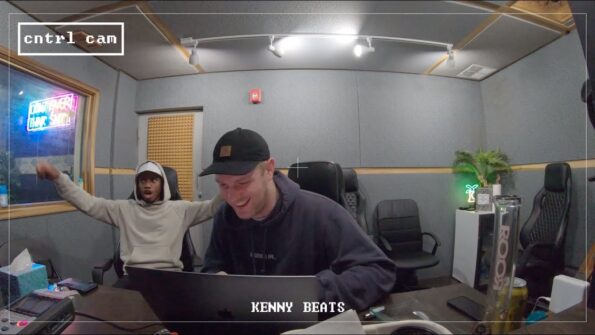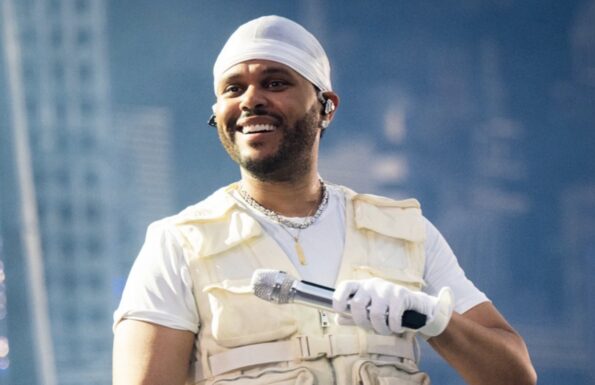After collaborating with reggaetón powerhouses like J Balvin, Ozuna and Bad Bunny to create avant-garde music videos for albums like Colores, Oasis and Nibiru, director Colin Tilley asks himself: “How come I didn’t know about reggaetón before?”
Known for working with major artists including Kendrick Lamar, Post Malone, DJ Khaled and Nicki Minaj, the Bay Area director’s introduction to the reggaetón world came thanks to DJ Snake, who put him up on both Balvin and Ozuna.
“I didn’t know much about reggaetón a year ago,” Tilley tells Billboard. “But now reggaetón has been popping my cherry, and it all started with DJ Snake. I was on set with him for ‘Loco Contigo,’ and I had about two hours with Jose J Balvin’s birth name]. My thing about being a director and working with featured artists on tracks is that you want to be able to make your impact with the time that you have, and Jose was someone who had been on my radar, ’cause he’s really killing it right now internationally.”
After the shoot, Tilley says Balvin called him and asked him to shoot some of the videos for his 2019 joint album with Bunny, Oasis. “Next thing you know, I’m in Puerto Rico and I’m shooting ‘Que Pretendes’ and ‘Yo Le Llego’ off of Oasis. I thought, ‘Wow, I found my calling.’ Reggaetón is so incredible and a happy world,” he says.
To date, he’s directed all of Balvin’s Colores videos, which continue to roll out after the album’s release; six of Ozuna’s Nibiru videos; and all the videos from the chart-topping joint album Oasis. Tilley also directed the video for “Taki Taki” with DJ Snake, Ozuna, Cardi B and Selena Gomez and The Black Eyed Peas‘ “Ritmo” with Balvin. “It’s so much fun to dive into this other world and be a part of it,” Tilley says.
In the candid Q&A, Tilley — who launched his production company Boy in the Castle three years ago — shares insight into his collaborations with Latin hitmakers and talks about the concept behind some of the Nibiru and Colores videos.
You mentioned you had Balvin on your radar, so what was it like when you met him on set with DJ Snake?
We met in Las Vegas out in the desert where we were shooting the video for “Loco Contigo.” He had another video shoot to go to afterwards and he couldn’t be late for that, so we got to work and we really clicked on that set. When Jose was leaving, he gave me a call and was like, “Hey, that was really fun. Do you want to keep working together?” And I was like, “Of course. Let’s do it.” Every time we set foot on set, Jose and I have so much fun. It’s like a playground.
Before we talk about J Balvin’s Colores, you’ve also worked with Ozuna directing some of his futuristic Nibiru videos. What was the concept behind them?
I met Ozuna on “Taki Taki,” which he did with DJ Snake. I really owe it all to DJ Snake. Last year I got a FaceTime out of the blue and Ozuna was like, “Hey, I want you to do a visual album for me. I’d like you to write something that takes place on planet Nibiru.” I had been approached by artists in the past to do full albums and I knew that nobody was ever serious about it, but I think that the way Ozuna was really talking, I was like, “You know what? I’m going to write something and see if he’s all about it.” I had a couple of days to write and it was essentially each song taking you to a different planet to finally get to planet Nibiru, because the planet he was in was getting destroyed. He literally called me an hour later and was like, “I’m 100% ready to do this.” I thought, the only way I can execute this is if we go to Mexico City and shoot in caves and in the jungle out there to achieve an otherworldly effect. Without flinching he said, “Let’s go. I trust you and I want to make this happen.” We shot three videos in Mexico and the other three in different locations throughout Los Angeles like Universal Studios.
Do you speak Spanish? How do you approach the process of directing a Spanish-language video?
I’m working on my Spanish. I’m not that good at speaking it but can understand it. Just before I approached the Colores videos, I had very in-depth conversations with Jose not necessarily about the lyrics, but more about the intention and the feeling, and I think that’s why I love reggaetón so much, because the feeling is so good when you listen to it. Now I like to run to it, work out to it, like to party to it. It’s a vibe and feel-good music.
The videos off of Colores are trippy and edgy. What were the initial conversations like with Balvin?
The goal was to create different content that would really stand out and that the reggaetón world hadn’t really seen before. Jose is just the definition of a true collaborator. We have these great conversations where we can throw spaghetti against the wall and some days, none of it will stick, but if one of those spaghetti strings sticks and we’re able to make it work, then that little spaghetti string will continue to lead to other cool ideas because it’s so far left.
For example, one day when we were in New York shooting the “Morado” video, we sat down on a bench and he says, “I was on the treadmill this morning and I saw an afterlife for myself. I saw myself getting into this car crash and I turn into a ghost and it’s like this heartfelt love story that we can create for ‘Rojo.’” Throughout the day, while we’re shooting a whole other video, we’re just going back and forth with ideas that by end of the day, I had a treatment written for every single beat of the story.
Or like what we did with “Azul” is one of the most ridiculous ideas I’ve probably ever had, which you’ll all see soon, and he looked at me on FaceTime with the straightest face and said, “I love it.” It’s one of those ideas that you could either seriously hate it or love. And that’s what we strive for: You either will love it or hate it. It’s also about the feeling you get from a color, because when we listen to music, we see colors, you feel a color, and that’s the beauty of music. Let’s make you feel something.
My goal was for every video that drops for it to up the previous one. If we’re not doing that, then we’re not doing our job and there’s no point of releasing every single video.
What makes you want to jump on a new project?
At this point, I’ve worked with kind of every artist out there and now it’s just about how a song will make me feel and challenge me. When you’re in the creative field like we are, what drives us more than anything? And that’s a new challenge. It’s a new goal to set, a new goal to accomplish, and I think the reason why jumping into the reggaetón world was so exciting for me because it was different. I haven’t done a non-reggaetón video in so long because it was a new challenge for me and it’s a language that I’m still learning, it’s a whole new vibe of music, and it makes me think differently. Right now, it’s about what can really make me think different, what can continue to challenge me, and that’s the crazy thing about music: Every song has its own story, a destined look or visual to accompany. If it’s something that makes me feel or think differently, then I’m all in.
What are you up to during quarantine?
I’m actually using this time to develop ideas for longer-form content that I want to make. Usually, I’m never really able to just sit with something, so for the first time in a while, I’m really able to just sit here and really work on my personal ideas.



